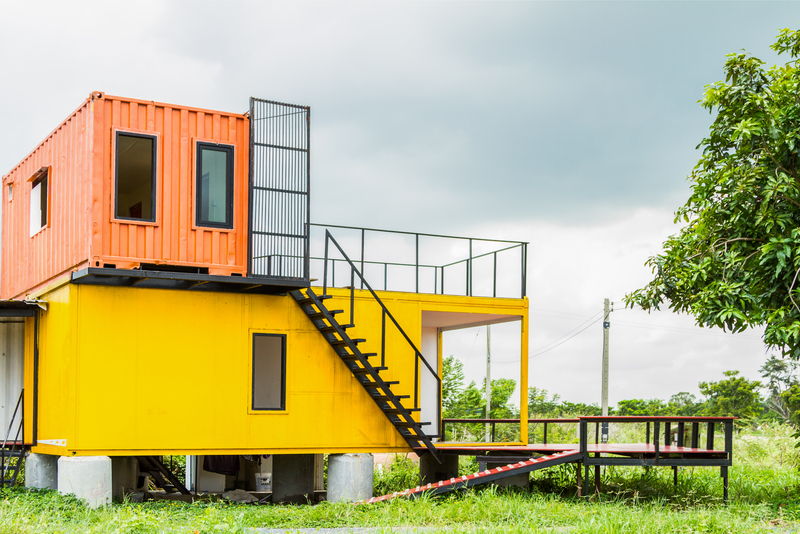How to Determine if Waste is Hazardous: A Complete Guide
Every industry, business, or household produces waste. While much of this waste is harmless, a significant portion may possess properties that are dangerous to human health or the environment. Determining whether your waste is classified as hazardous is not only essential for regulatory compliance but also plays a crucial role in environmental protection. In this comprehensive article, we will examine the process of identifying hazardous waste, key characteristics to look out for, methods of classification, and the regulations that surround hazardous waste management.
What is Hazardous Waste?
Hazardous waste refers to any discarded material--liquid, solid, or gas--that poses a substantial threat or potential hazard to human health or the environment. This could be due to its chemical composition, toxicity, flammability, corrosiveness, or reactivity. The process of determining whether a waste is hazardous starts with understanding the legal definitions and scientific characteristics set forth by regulatory authorities such as the Environmental Protection Agency (EPA) in the United States or similar entities worldwide.
Why Proper Identification is Critical
- Compliance: Avoid stiff penalties for mismanagement or incorrect disposal of hazardous waste.
- Safety: Protect employees, the public, and the environment by managing waste correctly.
- Waste Minimization: Correct identification can help reduce unnecessary hazardous waste, lowering disposal costs.
- Liability Protection: Prevent future liability associated with improper storage or disposal.

The Step-by-Step Process: How to Identify Hazardous Waste
Step 1: Determine If Your Waste Is A "Solid Waste"
The EPA and other regulatory agencies first require you to assess if your material fits the definition of solid waste. This umbrella term covers any discarded material--whether solid, semi-solid, liquid, or contained gas--resulting from industrial, commercial, or community activities. If the material isn't a solid waste, it cannot be classified as hazardous.
Step 2: Is the Waste Excluded?
Some wastes are explicitly excluded from hazardous waste regulation due to their unique origins or management schemes (e.g., domestic sewage, irrigation return flows, certain mining materials). Before proceeding, consult relevant regulatory lists for exclusions or exemptions.
Step 3: Is Your Waste "Listed" or "Characteristic" Hazardous Waste?
There are two primary ways waste can be considered hazardous:
-
Listed Hazardous Wastes: These wastes appear specifically on the EPA lists found in 40 CFR Part 261 Subpart D. The primary lists are:
- The F-list (non-specific source wastes): Wastes from general industrial processes (e.g., solvents used for cleaning).
- The K-list (source-specific wastes): Wastes from specific industries (e.g., certain petroleum refining residues).
- The P- and U-lists: Discarded commercial chemical products (such as unused pesticides or pharmaceuticals).
- Characteristic Hazardous Wastes: Wastes that exhibit one or more hazardous properties--ignitability, corrosivity, reactivity, or toxicity--even if they are not specifically named on a list.
The Four Characteristics of Hazardous Waste
- Ignitability (D001): Waste that can easily catch fire and sustain combustion (e.g., solvents, gasoline). Liquid wastes with a flash point less than 60?C (140?F) are generally considered ignitable.
- Corrosivity (D002): Wastes that can corrode metals or destroy tissues, such as acids or bases with a pH less than or equal to 2, or greater than or equal to 12.5.
- Reactivity (D003): Wastes that are unstable under "normal" conditions. They may cause explosions, release toxic gases, or react violently with water.
- Toxicity (D004-D043): Wastes that are harmful or fatal when ingested or absorbed or leach toxic chemicals into groundwater. The EPA uses the Toxicity Characteristic Leaching Procedure (TCLP) to assess this property.
Testing and Analytical Methods
Once you've identified a waste as potentially hazardous, proper testing is vital. Relying on waste "knowledge" (such as prior information about the process generating the waste) can be sufficient, but if not, laboratory analysis is required. Here are some commonly used testing procedures:
- Flash Point Test: Determines if a liquid waste is ignitable.
- pH Testing: Assesses corrosivity by measuring how acidic or alkaline the waste is.
- Reactivity Assessment: Evaluates potential for explosive chemical or thermal reactions.
- TCLP (Toxicity Characteristic Leaching Procedure): Measures how much of certain hazardous chemicals (metals, pesticides, organic compounds) can leach from the waste under landfill conditions.
Note: Make sure testing is conducted by a certified laboratory according to official protocols to ensure regulatory compliance.
Regulations Governing Hazardous Waste Determination
In the United States, the Resource Conservation and Recovery Act (RCRA) provides the framework for the entire process of hazardous waste management. However, most states are authorized to implement their own hazardous waste programs, which must be at least as stringent--but may be stricter--than federal standards.
In Europe, the Waste Framework Directive and the European List of Waste (LoW) guide hazardous waste determination. Other countries may have additional or differing regulations, but the same general principles apply worldwide.
- Always check your local, state, and national regulations for specific requirements or exemptions regarding hazardous waste identification and management.
Documentation and Waste Codes
Each hazardous waste type is assigned a unique code (such as "D001" for ignitable waste) for tracking and management purposes. Maintaining comprehensive documentation is essential for:
- Environmental reporting
- Waste transporter requirements
- Legal liability
Common Examples of Hazardous Waste
- Solvent-based cleaners and paint thinners
- Used motor oils and lubricants
- Acids, bases, and other corrosive chemicals
- Pesticides and herbicides
- Electrical equipment containing PCBs
- Pharmaceutical waste (outdated medications, chemotherapy drugs)
- Heavy metal-containing items (batteries, fluorescent bulbs)
- Laboratory and medical waste
What Happens If You Misidentify Hazardous Waste?
Mistakenly classifying hazardous waste as non-hazardous, or vice versa, can result in severe consequences:
- Fines or legal actions from regulators
- Environmental contamination and remediation costs
- Increased risk of accidents, injuries, or health problems
- Damage to company reputation and loss of business opportunities
Therefore, accurate identification is not optional; it's a core operational responsibility.
Tips for Ensuring Accurate Hazardous Waste Identification
- Keep Detailed Records: Document every step, from waste generation to final disposal.
- Train Personnel: Make sure employees understand waste types and handling policies.
- Label Containers: Clearly mark all containers with their contents and hazard status.
- Consult Experts: When in doubt, use qualified environmental professionals to assist with waste sampling and testing.
- Stay Informed: Regulations change. Subscribe to regulatory updates relevant to your area and sector.

Frequently Asked Questions on Hazardous Waste Identification
How do I know if my business generates hazardous waste?
If your business produces or discards any chemical, commercial product, or process byproduct such as solvents, metals, acids, or pesticides, you may generate hazardous waste. Review the processes and chemicals used in your operation and compare them against the EPA's hazardous waste lists.
What is the difference between hazardous and non-hazardous waste?
Non-hazardous waste lacks the specific characteristics or listed chemicals that make waste dangerous. It might come from food, packaging, or general office operations. Conversely, hazardous waste typically contains chemicals or exhibits properties that can harm people or wildlife if improperly managed.
Can household waste ever be regulated as hazardous?
While most residential waste is managed under separate rules, certain household products (like paints, cleaners, pesticides, and batteries) may qualify as hazardous "household hazardous waste (HHW)." Many local communities run collection events or have drop-off sites for these items.
Is recycling a solution for hazardous waste?
Some hazardous wastes can be safely recycled, such as used oil, spent solvents, and certain batteries. However, strict controls and approved facilities are needed to ensure safety. Recycling may reduce environmental impact but does not remove generator responsibility for categorization and handling.
Conclusion: Taking Responsibility for Hazardous Waste
Whether you operate a manufacturing plant, a healthcare facility, an office, or even manage a household, determining if your waste is hazardous is an essential first step toward responsible and compliant waste management. By understanding the laws, thoroughly analyzing your waste, and applying the correct procedures, you will protect not only the environment but also the people in your community and your organization from risk and liability.
For ongoing success, make hazardous waste identification and management part of your core environmental & safety strategy. When in doubt, consult regulatory resources or professionals specializing in environmental compliance to ensure you meet all requirements and contribute to a safer, cleaner world.
```